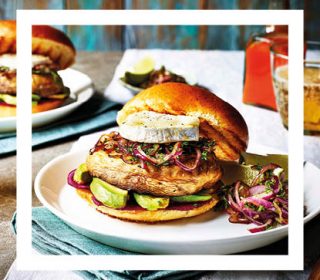5 Innovative News Stories to Smile About

Sure – the gyms might soon be making a comeback, but let’s be real, that’s not quite as impressive as the return of wild bison to the UK! Right? In this next feel-good instalment, James Gill updates us on some of the innovative news stories from the past week that you may have missed.
1. EDUCATION – A ‘Soft touch
If, like several of us at BALANCE, you’re fretting over how to keep the kids entertained and inspired this summer, the answer could come from Microsoft (and, no, we don’t mean plonking them in front of the Xbox for a few weeks… I mean, it’s tempting).
After all, given how much time we all spent with our children throughout lockdown, the well of ideas may have run dry for many. Thankfully, Microsoft is launching free Virtual Summer Camps for UK children through the summer, with a range of innovative topics covered, such as creativity, coding, community and more.
“This summer is looking a little different for a lot of families and kids in the UK but that doesn’t mean the inspiration, up-skilling and fun needs to end,” reassures Sahar Erfani, Community Development Specialist at Microsoft. “We’ve created this new series of free virtual workshops to give UK kids the tools to be inspired and start to put their own steps in place to truly make their make on the world thanks to an understanding of how technology can help them along their way – no matter their existing ability or skillset.”
The Virtual Summer Camps programme will run from 6 July to 30 August and is freely available for kids aged between 8 – 15 years old. To find out more about the Virtual Summer Camp, and to sign up for the innovative and free workshops, click here.
2. HEALTH – Food and mood
There was a time when the phrase “I have a feeling in my gut” could be dismissed as folksy nonsense, invariably said by an elderly relative about an upcoming event. However, it turns out your gran might have been on to something. After all, as studies continues to show (and as we repeatedly talk about on the BALANCE podcast – check out Dr Megan Rossi’s episode here), there is a link between the gut and the brain.
What’s more, as new research published in BMJ Nutrition Prevention & Health suggests, probiotics could help combat depression. The study says: “In this way, with a better understanding of the mechanisms, probiotics may prove to be a useful tool across a wide range of conditions. As such, the effect that probiotics have on patients with [common mental disorders] may be twofold: they may directly improve depression in line with the observed findings of this review, and/or they might beneficially impact a patient’s experience of their [common mental disorder] by alleviating additional comorbidities.
Purely from the information gathered for this review, it is valid to suggest that, for patients with clinically recognised depression: isolate, or adjuvant prebiotic therapy is unlikely to affect an individual’s experience of their condition in a quantitatively evident way; and that isolate or adjuvant, probiotic/combined prebiotic-probiotic therapy may offer a quantitatively measurable improvement in parameters relating to depression. However, there are inadequate data to suggest anything meaningful to support or refute the use of either pre/probiotic agents (or a combination of both) in patients with clinically recognised anxiety disorders; this would be a useful area to investigate further.”
3. WILDLIFE – Graze anatomy
Just imagine if you saw a wild bison in Kent without realising they’d made a return? You would, in the best-case scenario, require a new pair of undergarments. Granted, the bison is a grazing animal that’s regarded as entirely peaceful yet, at up to one tonne, they are positively monstrous.
The steppe bison roamed free in Britain around 10,000 years ago, and its close relative is set to mark the return of the bison to Britain thanks to the innovative team at People’s Postcode Lottery Dream fund. “We can now take an important step towards reversing the terrifying rate of species loss in the UK. A wilder, nature-based solution is the right one for tackling the climate and nature crisis we now face,” says Paul Hadaway, of Kent Wildlife Trust. “Using missing keystone species like bison to restore natural processes to habitats is the key to creating bio-abundance in our landscape.”
Paul Whitfield, Director General of Wildwood Trust, adds: “The partners in this project have long dreamt of restoring the true wild woodlands that have been missing from England for too long. “This will allow people to experience nature in a way they haven’t before, connecting them back to the natural world around them in a deeper and more meaningful way. It will inspire people and demonstrate to policy makers that nature presents the answer to the crisis we face. It will empower them to make a difference and it will prove that there is a way to make things better in these challenging times.”
And Laura Chow, Head of Charities at People’s Postcode Lottery, says: “The players of People’s Postcode Lottery provide vital funding to a wide range of environmental projects. I am delighted this award from the Postcode Dream Trust will enable this important project to go ahead.”
4. TECHNOLOGY – Fin-tastically innovative breakthrough
We’ve all seen Blackfish by now (and, if you haven’t, you need to rectify that immediately – it’s on Netflix) and come to the realisation that water parks might not be the happy pro-sea-life places we thought.
It’s easy to think dolphins, killer whales and the like are living in paradise as they dance and frolic for our collective amusement. But as the innovative documentary shows, living and training conditions are often far from ideal. It’s one of the reasons why Edge Innovations has created a robot dolphin.
Yes, really. Granted, if you think about hit TV show Westworld for too long, then it’s enough to send a shiver up the spine, yet this truly innovative idea could prove to be a crucial cruelty-free alternative. After all, a recent survey found that holiday makers would prefer to see dolphins in their natural habitat, rather than a water park.
“This dolphin weighs, feels, and has been engineered to simulate everything from the skeletal structure, to the muscular interaction with that skeletal structure, to the fat bladders and weight deposits on a real adolescent bottlenose dolphin,” explains Roger Holzberg, formerly of Disney and now of Edge Innovations. “For those of us that care about marine animal preservation, this is a dream come true.” He adds: “This type of technology doesn’t just have to live in a themed aquarium. If I were to imagine … a sequel to Whale Rider, where we could go into the ocean, this technology would serve that incredibly well. This technology could also serve television, other kinds of storytelling media very well, and other sorts of educational means.”
5. NATURE – Pining for a comeback
You know what’s made a comeback during lockdown? No, not spending all day in your pyjamas… Well, actually, yes, technically you’re correct. But it’s not the considerably more innovative and impressive answer we have written down here. Sorry, we’ve gone off-topic here. The answer is: pine martens.
The frankly cute-looking mustelid is enjoying a return in England, having been successfully transferred from Scotland to the Forest of Dean, Gloucester. Now, the females have birthed kits (“kit” is one for the next Zoom pub quiz, isn’t it?) and the signs are good for the sort of comeback that would make Lazarus blush.
“This is hugely reassuring for us and a major success factor for the project,” explains Dr Cat McNicol, a conservation projects manager at Gloucestershire Wildlife Trust. “The fact that some females have given birth suggests the conditions in the forest are as good as we had hoped. “There seems to have been plenty of food available for them through winter and there are lots of great denning sites for the females to give birth and raise kits in, such as old beech trees full of hollows and mature conifers with cracks and cavities out of reach.”
And Rebecca Wilson, a planning and environment manager for Forestry England, adds: “The hope is that over the next two years, more pine martens will be released into the forest and that a population will establish there. This population will then spread and link up with recently reintroduced Welsh pine martens, creating a new stronghold for the species and ensuring its survival.”








